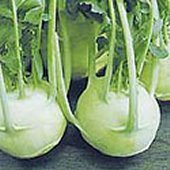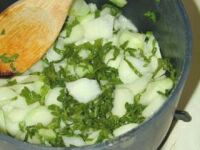

Kohlrabi is a vegetable from the cabbage family and is from European origin. The word Kohlrabi has German connotations, where Kohl is cabbage and Rabi is turnip. Kohlrabi’s base is a cabbage with a turnip like protrusion towards the head. Kohlrabi is crisp in texture, juicy and sweet.
It tastes more or less like turnip, but has not been a very popular as a vegetable in America, but has been a part of Asian and Central European cuisine. There are several varieties commonly available, including White Vienna, Purple Vienna, Grand Duke, Gigante (aka “Superschmeltz”), Purple Danube, and White Danube. While you select Kohlrabi go for small bulbs with fresh tops and thin rinds, the large bulbs are tough as the juices dry as they mature. The bulbs with blemishes and cracks should be discarded while purchasing. Kohlrabi should be stored in the crisper section of the refrigerator, as it is important for the Kohlrabi’s to be stored in the cool conditions. The bulb of Kohlrabi is a good source of Vitamin C and the green leaves are a good source of iron.
As far as cooking Kohlrabi is concerned, you should trim the root ends and vine like stems of Kohlrabi. The Kohlrabi should be cleaned and then cut into cubes. Kohlrabi greens can be sauteed along with the Kohlrabi flesh or can be stir-fried separately. Kohlrabi can be steamed, baked, grilled or stir-fried. Young Kohlrabi juliennes can go with salad or with a French dressing.
I prefer having Kohlrabi as a stir-fry with carrots, peas and potatoes as all the vegetables enhance the taste of the vegetable. Steamed or grilled Kohlrabi can also taste wonderful with dips, vinaigrettes and sauces. You can also cook it as you cook radish and pair it with meats for a unique casserole.




